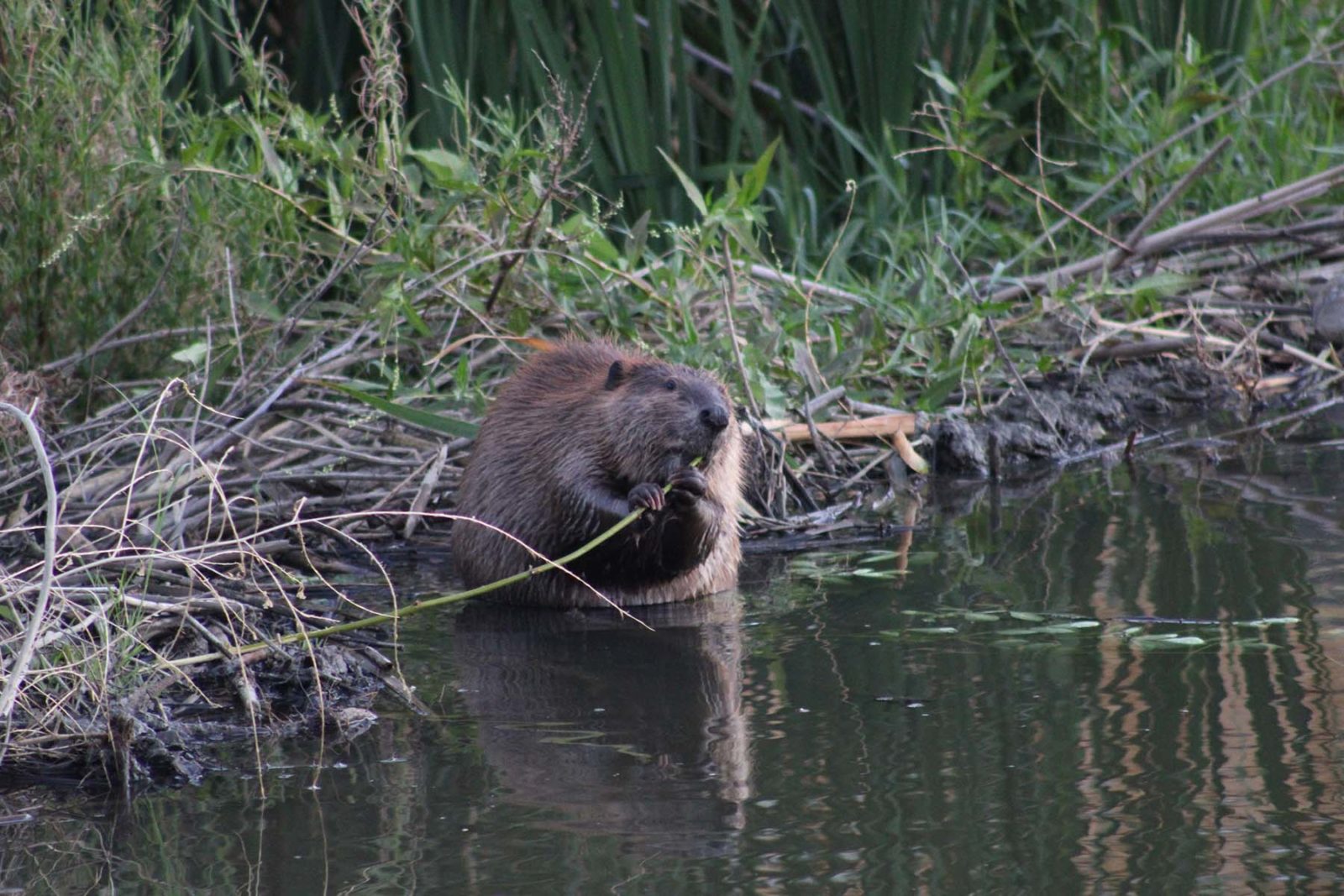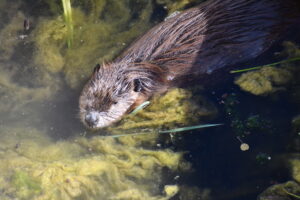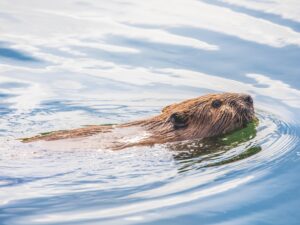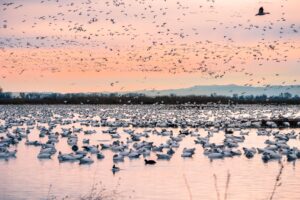One month into 2020’s shelter in place order, Virginia Holsworth and her family decided to change things up by walking in the opposite direction of their usual daily stroll through suburban Fairfield. That’s when she first encountered the amassment of sticks blocking the path’s adjacent creek, Laurel Creek.
She suspected the sticks meant the work of a beaver. Curious, she inspected the area, finding webbed footprints along the creek bank and chew marks on surrounding wood. Still, it wasn’t until she caught a glimpse of a brown slicked-fur-covered head that she was certain — she’d stumbled upon a beaver dam. A few days later, she saw the beaver family of four that gave rise to a lush green haven in her neighborhood.
For the next few months she watched cormorants and blue herons among the cattails and tules. Supposedly the creek even contained so many rainbow trout, a member of the community — illegally — caught 40 of them. The way the beavers and their dam had changed the landscape and reinvigorated the habitat enthralled Holsworth, and she became devoted to preserving them in her community.
Holsworth soon connected with Heidi Perryman, the Bay Area’s most ardent beaver activist and founder of the Martinez-based nonprofit Worth a Dam. Perryman warned Holsworth that the ecological wonder she’d found might be in jeopardy. The city of Fairfield had a permit to remove dams and had already, in 2015, obtained a permit to kill beaver.
Just a few months later, in fall 2020, the city public works department removed the beaver dam, citing the potential for flooding in the rainy season. Holsworth watched as the cattails wilted and birds quickly devoured the newly exposed crawfish.
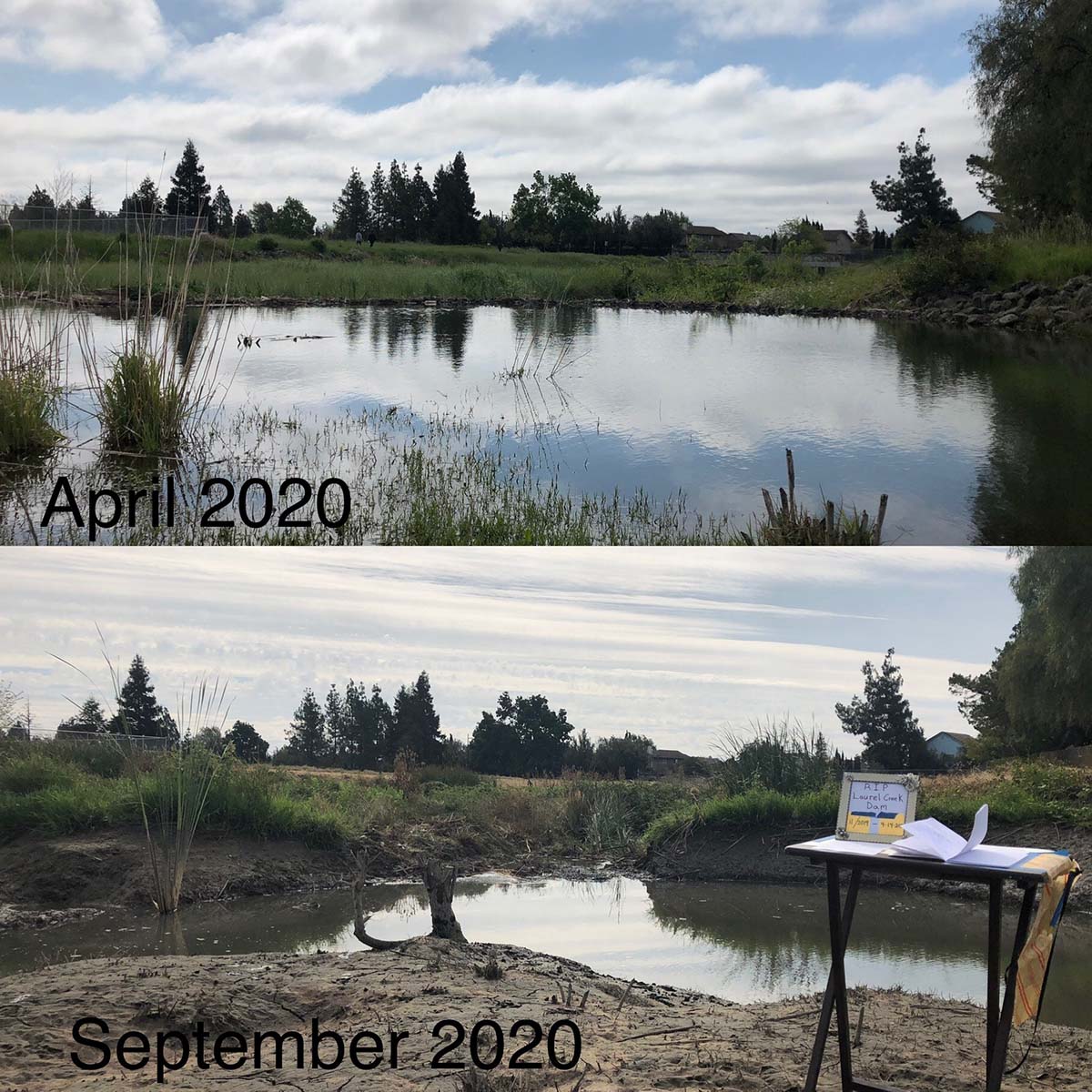
The beaver in Holsworth’s neighborhood created a habitat that’s in critical demand in drought-stricken California. Over the last couple of decades, researchers have amassed evidence of beaver’ benefits in ecological restoration and of their native role in the state’s natural landscape. But the California Department of Fish and Wildlife still operates under beaver legislation that hasn’t substantially changed since 1981. Under these regulations, property owners can only remove the dams or kill the beaver. Now, as the state wrestles with drought and climate change, researchers are fighting for the state to allow beaver relocation.
The same behaviors that make beaver essential habitat creators in the wild pose threats to public infrastructure and safety in human-populated areas. Many cities and property owners, as in the Fairfield removal that Holsworth watched, see the environmental benefits of beaver dams as secondary to the potential property and infrastructure damage they might cause.
“There’s a problem to resolve there, so a lot of my research is focused on trying to maximize the benefits of beaver and reduce their negative impacts,” says Jimmy Taylor, a wildlife biologist for the USDA APHIS National Wildlife Research Center.
While dams are the iconic beaver creation, the animals also build lodges, or as Taylor describes them, “wooden igloos” serving as the family’s primary home. In larger bodies of water, beavers may burrow into a bank, destabilizing roads or other infrastructure built above.
For many, especially in the Central Valley, beaver problems aren’t just with the dams. They’re with the animal’s diet. Beaver’s primary sustenance comes from woody things like sticks, bark and stems. For growers that rely on trees, beavers eat through their livelihood. And for growers that need fully functional irrigation channels, beaver dams mess with precious water distribution.
Ryan Carrothers, a wildlife biologist with the California Department of Fish and Wildlife (CDFW), is one of the people charged with verifying property damage in the depredation permit process for the Bay-Delta region, which includes agriculturally dominant areas in San Joaquin and Napa counties.
“A lot of times people don’t want to kill the beaver, but they feel like that’s their only option, and they’ve got a crop to grow,” Carrothers said.
Carrothers said he always suggests alternatives if the property owner is receptive to non-lethal strategies. But sometimes, he has nothing else to offer.
“For some situations in the Delta — just seasonal irrigation ditches, really — there’s no workaround, and they’re just issued depredation permits,” Carrothers said.
County policies under CDFW regulation require Carrothers to issue depredation permits if there’s property damage, regardless of the circumstance. Policies related to his duty receive the most ire from beaver advocates.

Beaver policy, from depredation permits to dam removal, doesn’t often consider ecological benefits. Yet when beavers settle and build their homes, they create complex, nutrient-rich habitats that nurture various animals, including endangered ones.
Endangered Coho and Chinook salmon lay their eggs in slow, freshwater streams, a now rare natural habitat that beaver ponds can still provide. When beaver are killed, the species their habitats foster may suffer.
“The beaver dams and ponds that may be providing habitat for juvenile fish or that sort of thing can still be issued a depredation permit if damage can be proven,” Carrothers said.
In 2019, the Center for Biological Diversity (CBD) threatened to sue the US Department of Agriculture’s Wildlife Services section for not evaluating the effects of removing beaver in counties that contained endangered species – such as the Coho salmon in Carrothers’ region – before trapping, which CBD says violates the Endangered Species Act.
CBD lawyers argued that Wildlife Services risked multiple species’ survival by killing the beaver that create and maintain endangered species’ habitats. The threatened lawsuit resulted in Wildlife Services declaring it would stop providing killing services in endangered species-inhabited counties until the agency assessed whether it was violating federal law.
Some counties not included in the lawsuit — which were exempt from the ruling — also decided to sever their contracts with Wildlife Services.
That same year, CBD also sued Wildlife Services for using outdated trapping practices that may cause unnecessary suffering instead of prioritizing beaver management methods.
“[We’re] trying to get them to take a look at more recent science that shows just killing wildlife isn’t an effective way to deal with conflicts,” said Collette Adkins, a senior attorney at CBD.
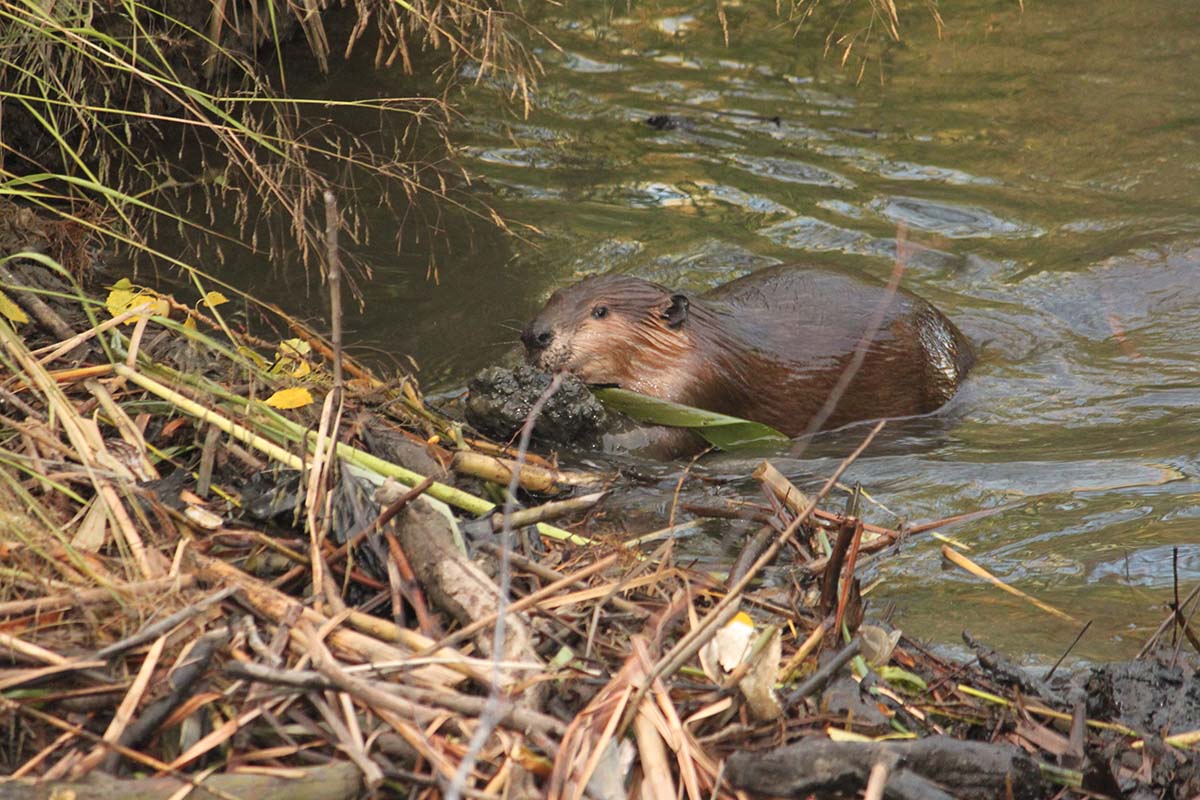
Killing beavers is cruel, but advocates like Adkins argue it’s also ineffective. If one beaver family leaves, the infrastructure is there for another to replace it. If just the dam is removed and the beavers are not, the beavers will rebuild.
Adkins says the best option is coexistence: using non-lethal methods to mitigate a beaver’s destructive behaviors. These might include levelers on dams to help prevent floods, or wrapping trees in wire to keep beaver from chewing on them.
“One of the things that we’re frustrated about is [current beaver management practices] just create this vicious cycle of killing,” Adkins said. “Unless you actually change the practices on those farms or ranches, you’ll just keep on having the same problem.”
Advocates like Perryman say that beavers have reached a turning point in popular culture, and that policy changes should follow. As more and more people like Virgina Holsworth discover and learn to enjoy beavers in their neighborhoods, they use their platform to share their passion and the research behind their cause, changing perspectives and gathering support.
In April 2021, a group of California beaver experts including Perryman inaugurated a Beaver Summit and welcomed people from 31 states and seven countries to learn about beavers and their ecological value. For beaver researcher, beaver advocacy pioneer, and California Beaver Summit host Brock Dolman, the summit served an additional purpose.
“[We want to] engender a sense that there’s a bigger movement going on here,” Dolman said. “This isn’t a little fringe side project in California, it’s part of a national movement.”
Dolman says one major policy change he’d like to see is to make relocating beavers an option. Right now, it’s mostly not: with a few exceptions a property owner’s only recourse if a beaver is causing a problem is to live with it or kill the animal. But there are plenty of spaces where researchers think beavers will make a positive impact. Relocating nuisance beavers to an area where they’re wanted will be a mutually beneficial option.
Many areas have used beavers as a vehicle for restoration. Sugar Creek is a watershed where researchers are using beaver dam-like structures to restore the habitat. Over the years, they’ve seen significant improvements in the waterway for juvenile Coho salmon and other aquatic life to thrive.
Right now, restoration projects like Sugar Creek use beaver dam analogs, or structures that mimic beaver dams, to entice them to move into the territory and take care of the rest. But even the best manmade beaver dams can’t replicate the real thing.
Researchers are still trying to understand the effect of moving beaver to new places. USDA biologist Jimmy Taylor conducted and followed nuisance beaver relocation in Oregon and found that most beaver don’t survive their initial placement under the state’s relocation protocols. One reason this may be the case is that leaving beavers without the safety of a dam makes them especially susceptible to predators while they construct a home.
The beaver that did survive established a home elsewhere, away from the intended spot. Behaviors like these still aren’t well understood and are hurdles in developing successful beaver relocation programs.
Still, the biggest obstacle for researchers is creating and refining a beaver relocation protocol without being able to actually move the animals. Scientists want policies that help progress their understanding and push the boundaries of what they already know they can do.
Holsworth said she remains puzzled by her city’s decision to take down the dam in Laurel Creek. After the removal, she went around and documented flooding activity around other dam sites near her home and saw none. What she did see was the displaced family of beavers rebuilding their dam a few feet away from the one that was taken down several weeks earlier.
To her, it seems like a needless cycle that CDFW has the power to stop. She, like everyone else in the beaver community, wants long-awaited reform that reflects the animals’ potential and prioritizes coexistence.
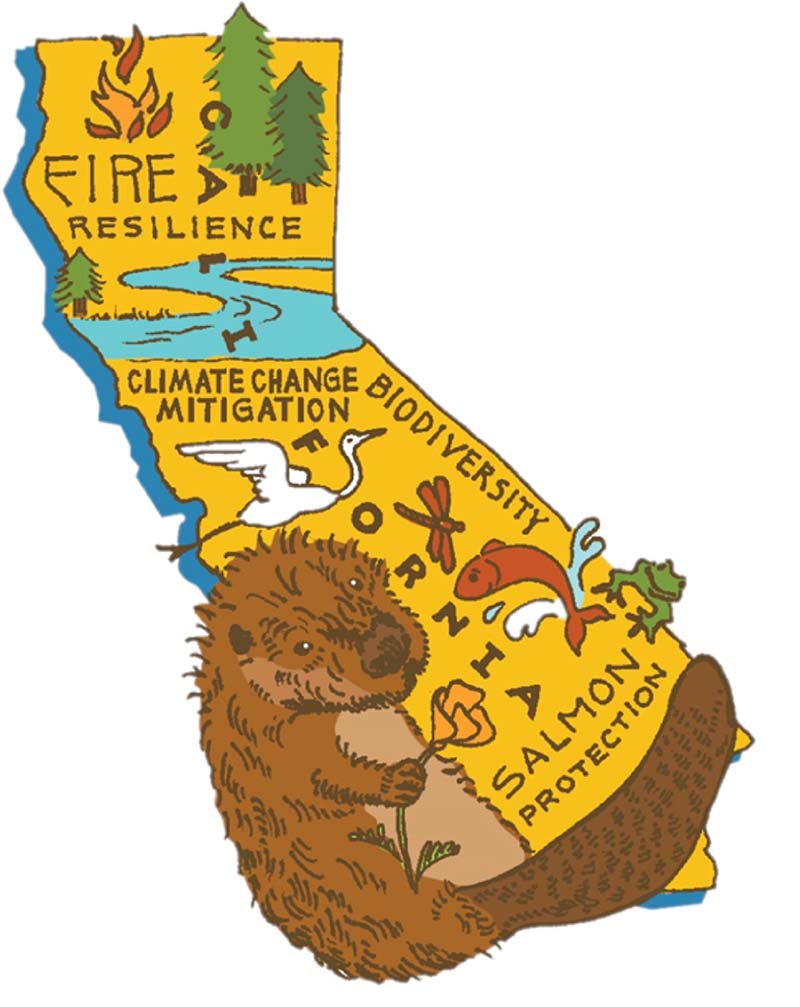
Holsworth is by the bank at twilight, along with other spectators from the community. The water’s undisturbed surface gleams as it reflects the setting horizon. The crowd watches sharp-eyed for spherical ripples to emerge from the depths.
As expected, there are ripples. Then glossy brown heads swim towards the creek’s edge.
Finally, lumpy brown beavers appear and loudly gnaw on wood while Holsworth assumes her role as beaver ambassador. She gives everyone a “Laurel Creek Beavers” sticker and a tiny, enthusiastic lecture on the wonders of beavers.
These beavers don’t cower from the crowd of admirers or act skittish when someone speaks at a normal volume. Rather, they coexist as members of the community and garner respect for bringing natural diversity and richness into Farifield’s suburbia.
This is the future Holsworth is fighting for. And she’s reached one early success. In fall 2021, the city chose not to remove the beaver dam on Laurel Creek.
“I just want to shout from the top of the mountain about how important they are. Like, hey, people pay attention,” said Holsworth. “These guys are really cool!”

